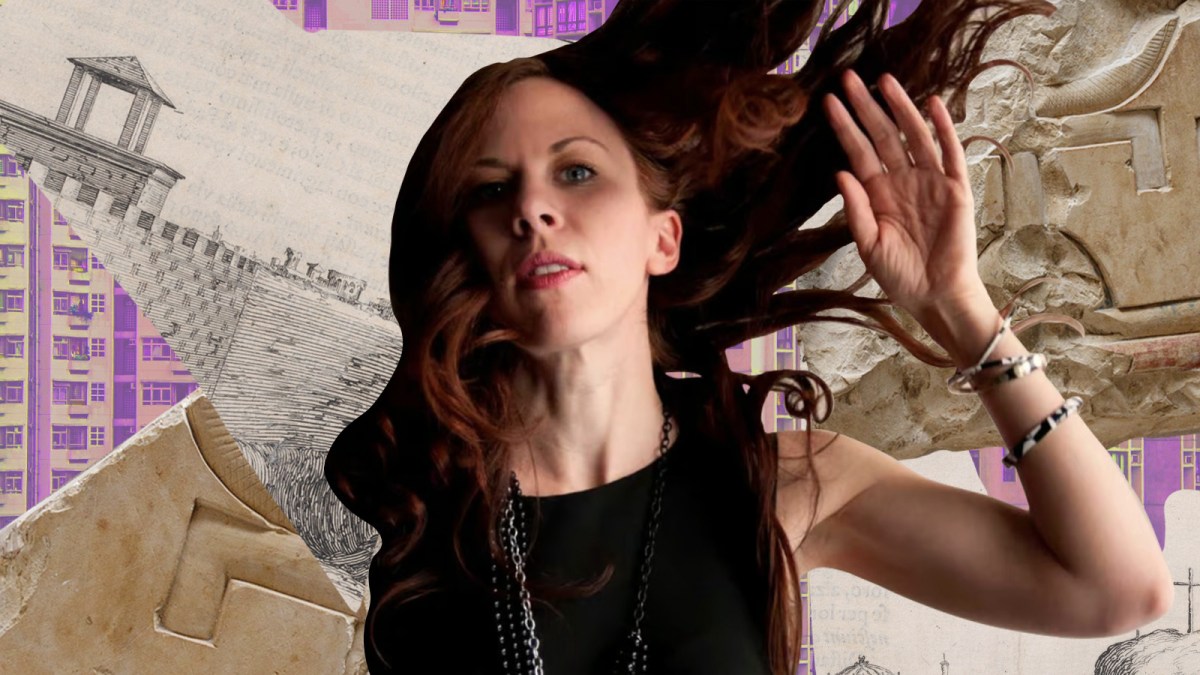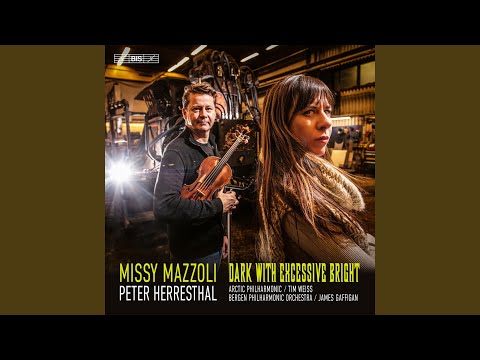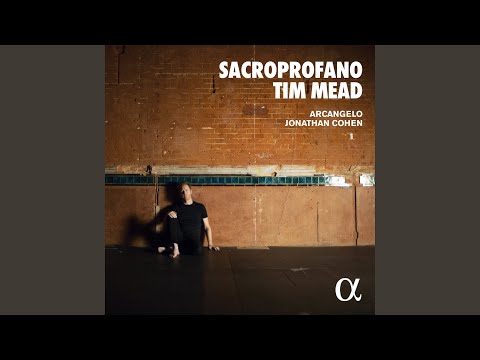- Peter Herresthal, Arctic Philharmonic, Bergen Philharmonic, Tim Weiss, and James Gaffigan: “Missy Mazzoli: Dark with Excessive Bright” (BIS)
- Tim Mead, Arcangelo, Jonathan Cohen: Sacroprofano (Alpha Classics)
Among Leo Tolstoy’s many near-death experiences (he did, after all, serve in the army, receive multiple threats against his life, and live in a time before antibiotics) was one that took place when he was 25. In January 1854, the young count was lost overnight in a snowstorm with his servant while traveling by troika between cities. Two years later, he turned that experience into “The Snowstorm,” a story in which a nobleman and his servant get lost overnight in a snowstorm while traveling by troika between cities. We get an insight into the nobleman’s psyche during this long night; he imagines that he’s about to die, hallucinates in the throes of hypothermia, but ultimately, morning dawns, the snow clears, and both men have survived.
Tolstoy probably didn’t expect anyone to remember “The Snowstorm” when, four decades later, he wrote “Master and Man,” a story in which a nobleman and his servant—you guessed it—get lost overnight in a snowstorm while traveling by troika between cities. But, as George Saunders points out in his book, A Swim in a Pond in the Rain, reading the stories in sequence can be instructive rather than repetitive, offering us “a glimpse of what Tolstoy had learned about narrative in the intervening 40 years.” The same setup yields a richer plot (held together by the throughline of Tolstoy’s gifts for description and inner monologue) that touches on class, sacrifice, and redemption. The experience means something beyond its existence. It is, as Saunders puts it, “a more highly organized system.” It’s only in the interest of posthumous completism that we are able to easily read both works side-by-side and trace this evolution.
Similarly, it’s only in the last 20 or so years that—thanks to platforms like YouTube, Vimeo, and SoundCloud—we’ve been able to follow a composer’s evolution in near-real time, regardless of geography. A work premieres in Sydney, and we’re able to watch a video of it from New York. A composer living in Los Angeles records a work-in-progress, and after a few minutes of upload time, it can be streamed simultaneously from Reykjavik, Rio, and Rabat. This is both a terrifying and fascinating development; terrifying in the vulnerability it leaves composers who would rather leave some works or drafts on the cutting room floor, fascinating because that same level of minutiae allows us as listeners to better understand composition as an active state. We see how a composer channels a gifted but less organized “Snowstorm” into a tighter and more illuminating system like “Master and Man.”
As a longtime Missy Mazzoli fangirl, I’ve followed her works like a proto-Tolstoyan probably picked up copies of Russian literary magazines to savor each of his latest literary salvos. Over the last two decades, her work has cast a wide reach. I’ve seen her band, Victoire, play in the basement-cum-blackbox space of The Stone in Greenwich Village. I’ve heard her chamber-choral work, “Vespers for a New Dark Age,” played at Carnegie Hall. I can’t wait for the premiere of her Metropolitan Opera commission, “Lincoln in the Bardo”—adapted from Saunders’s book of the same name. It’s been easy to trace Mazzoli’s music via the information superhighway, but the intrepid label BIS now offers us a first: a collection of works, written between 2006 and 2020, presented on one album recorded by two orchestras (the Arctic and Bergen Philharmonics, under—respectively—Tim Weiss and James Gaffigan, with violinist Peter Herresthal as soloist for the title track).
As any composer’s body of work grows and develops, patterns emerge. Themes are visited and re-visited. If composition is an artistic practice, “Dark with Excessive Bright” offers us that practice as both noun and verb. The ideas, images, and questions that are at the heart of Mazzoli’s works—the balancing acts between grief and joy, agony and release, sacred and profane, death and life, often layered in with their own literary references and intertextual frameworks—come into sharp focus. Also illuminated is how Mazzoli has refined those ideas over a period of 15 years, trimming fat in one area and adding depth to another. The stretches of violin glissandi in 2006’s “These Worlds In Us”—taffy-pulled between militaristic rigidity and time-bending overtones—are a testament to the memories of Mazzoli’s father as a soldier in the Vietnam War and the overlapping grief and joy within those memories. The relentless percussive elements in “These Worlds” are even more front-and-center in the first movement of 2020’s “Orpheus Undone,” subtitled “Behold the Machine, O Death.” Time’s arrow moves forward in short, sharp shocks, relentless and existential as a metronome. Strings mimic the rhythm like the stepchildren of Bernard Hermann’s score for “Psycho,” before edging the indefatigable woodblock into a maelstrom. The beat starts to spiral out of control, revealing death to be not a well-oiled machine, but three pandemoniums in a trench coat. The familiar shimmers of Mazzoli’s geologically-layered orchestral textures are a fulcrum that swing the listener between polarities. Her music is at its best when it functions like an amusement park Viking ship, between bouts of tension and release, between darkness and light, one side of the balance always threatening to tip towards entropy.
In the spirit of Saunders-esque comparison, try going from “Dark with Excessive Bright” into “Sacroprofano,” countertenor Tim Mead’s debut solo album for Alpha Classics. Between the coloratura embellishments of Mead’s countertenor—at once alkaline and transcendental—and the slow-burn of strings in the more measured movements of works like “Nisi Dominus,” you can hear a precursor to Mazzoli’s matrices of tension and release. Like BIS’s Mazzoli portrait, Mead—along with the ensemble Arcangelo and conductor Jonathan Cohen—also finds meta-comparisons within Vivaldi’s works. A piece like the opening “Nisi Dominus,” most likely written by the composer for his students at the Ospedale della Pietà, illustrates the earthly elements found in his divine liturgies. The work’s fourth movement, “Cum dederit dilectis suis,” is languid and lusty, setting the text “For he has granted to those he loves rest: behold an inheritance from the Lord – sons: a reward, the fruit of the womb.” Vivaldi emphasizes the implicit sensuality of this inheritance in a vocal line that unfurls like one continuous bolt of silk, spanning a near-unbroken three minutes of melody, indelible as pillow marks. It’s tailor-made to Mead’s voice, which demonstrates the highly organized system of Vivaldi’s compositions.
As the title suggests, there’s also a semblance of the divine within Vivaldi’s secular works. Bookending “Sacroprofano” is the cantata “Amor hai vinto, hai vinto,” which runs like a Vivaldi opera in miniature. The narrator has fallen prey to the tortures of love. His heart “throbs with new shocks,” and he goes “from pain to pain like the ship that, tossed from wave to wave, juddering, juddering goes.” It’s only when he makes eye contact with his beloved that he no longer feels “as a martyr.” Vivaldi realizes this is passion play writ small, but he still infuses elements of the ecumenical into his score, the narrator’s torment reading at times like that of Christ’s—or at least a lesser saint. The strings in the tormented second aria are relentless as Mead’s vocal lines navigate fire and brimstone, mirroring the opening bars of “Nisi Dominus.” The redemption of the final aria, when our hero is excused from his role as martyr, comes as balmy as any divine benediction. ¶



